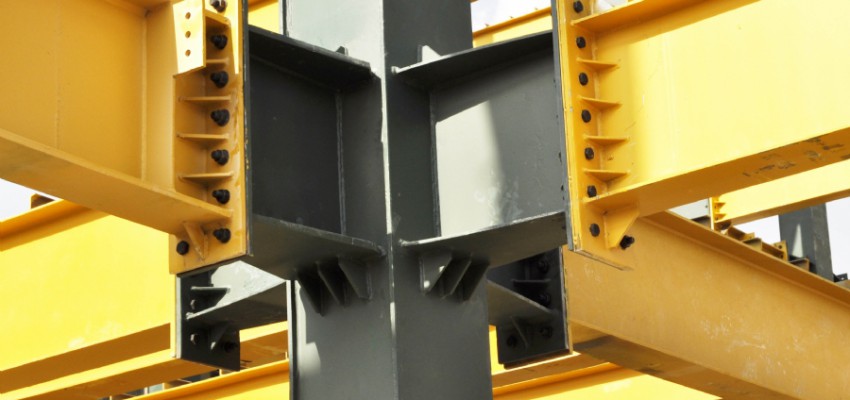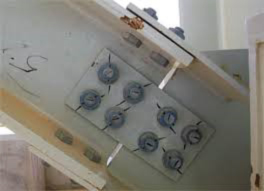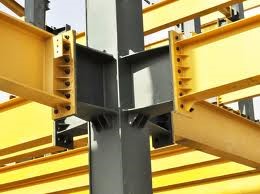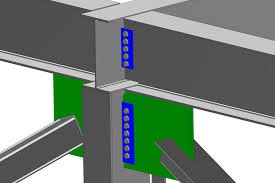From inquiry to occupancy, no other building system matches the Steel Structure Systems when it comes to economy, flexibility and speed of construction. Moreover, producing steel sections in factories and better quality control conditions comparing to concrete systems, have made Steel Structure Systems a better choice in comparison with concrete and other building systems.
In addition, being extendable via special extension systems, the ability to join different components to each other, producing the components in factories, high erection speed, low space occupancy, and being usable in high-rise projects can be listed as other advantages of Steel Structure Systems.
High Resistance:
Very high resistance and the ratio of resistance to weight of the materials in Steel Structure Systems make them a better choice for customers comparing to the former concrete systems.
Consistency in Attributes:
Different metal components of Steel Structure Systems are produced in large factories with the highest care and supervision, so that you can be assured of consistency in their attributes. Contrary to concrete building systems, the components in Steel Structure Systems are not sensitive to environmental factors.
The mentioned consistency in Steel Structure System components and materials, enable the customers to choose the most economical systems for their buildings with peace of mind.
Persistence:
The persistence of steel components is so high, so that, Steel Structure-Based buildings, if maintained appropriately, can be used for a long time.
Recessive properties:
Recessive properties of steel materials have a strong practical proof. Steel materials comply with the Hook Code very well under high pressures. For instance, the calculation of the Moment of Inertia of a steel section can lead to high confident results, while the same calculations for concrete sections would not lead to precise and reliable results.
Flexibility:
One of the considerable positive points about Steel Structure Components is their flexibility that makes them resistant to live loads and sudden shocks, while concrete building systems lack this important factor. The mentioned flexibility impedes sudden destructions in Steel Structure Systems and allows people to survive in dangerous situations. Further repair processes are also possible in Steel Structure Systems.
Adhesion of Materials:
While concrete sections may have violent damages on their concrete surface in possible earthquakes and may be destructed in further shocks, metal components, according to their initial materials, are cohesive and consistent enough to be stable in harsh conditions.
Dominant Resistance of Materials:
The dominant resistance of steel materials remains the same under load and stress; it is also approximately the same in such cases where cutting is needed. The mentioned factor enables us to change the type of loads, stresses, etc. without any negative effects. However, buildings built with concrete materials are really sensitive to stress and cutting operations and may have irreparable damages in the mentioned cases.
Explosion:
Steel Structure Buildings are safer in explosions and sudden shocks.
Extension Systems:
In some specific cases such as false calculations or possible changes in the building codes, etc., some parts of the buildings may be considered weak. In these cases, remedial operations and extension processes are possible through welding or fastening new parts and sections. Moreover, some sections and frames can be added to the buildings as well.
Ease in Production and Erection:
Production of the metal components in the factories and erecting them in different atmospheres of erection sites are possible with specific considerations.
Erection Speed:
The erection speed of Steel Structure Buildings is considerably higher than concrete buildings.
Waste of Materials:
The waste of materials in Steel Structure Buildings is lower than concrete buildings.
Low Weight:
The average weight of steel buildings can be estimated 245- 390 Kg/m2 or 80- 128 Kg/m3; while the same estimations will be 480- 780 and 160- 250 for concrete buildings.
Space Occupancy:
In two buildings with the same height and column dimensions, one built with Steel Structure Components and another with concrete sections, the magnitude of the purlins in the former is smaller than the latter, and accordingly more space will be saved in the former.
Vibration Load Coefficient:
The movements of the ground in earthquakes cause some internal loads in building components. In fact, the building should be stable on the shaking area and should remain safe. The vibration load coefficient in concrete frames with higher weights is higher than steel structures. Experiences have shown that, damages on low-rise buildings built on firm areas,and high-rise buildings built on softer areas, are considerably high. In other words, on softer areas that have larger shaking periods, low-rise buildings have had better results. Meanwhile, high-rise buildings on firm areas with smaller shaking periods have shown better results. The behavior of buildings during earthquakes is directly related to the attributes of rigidity and flexibility of the buildings; and the natural shaking period of a building is of the highest importance among other factors.
Improving the Quality of Components:
The quality control of all products before, while, and after production activities that is done by the resident QC management in the factory, improves the quality of produced components very well.
Reusable Components:
The reusability of the components in steel structures, especially in fastening systems, enables us to reuse almost all components in future.
Steel Structures types:
The following factors are involved in designing and production of steel structures:
1- Side wall heights (outside)
2- Building width
3- Building length
4- Whether to use overhead cranes, and if used, the magnitude of their loads
5- Snow loads
6- Wind loads
7- Earthquake loads
8- Resistance of the ground in erection site
9- Desired roof cover










Leave a Comment